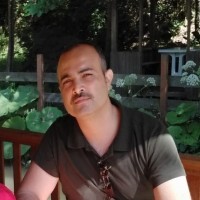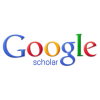Research Article
Aim & Scope
The aim of the JONAS is to advance in the areas on the significant developments and innovations in the many faces of natural and applied sciences.
Open Access:
Abstracts and full texts of all articles published in the journals can be read online without any form of restriction. All users have the right to free availability on the public internet, permitting any users to read, download, copy, distribute, print, search, or link to the full texts of these articles, crawl them for indexing, pass them as data to software, or use them for any other lawful purpose, without financial, legal, or technical barriers other than those inseparable from gaining access to the internet itself.
For all your comments and recommendations on JournalPark,
please contact us using the link dergipark@ulakbim.gov.tr or ulakbim.dpdestek@tubitak.gov.tr for technical support.
Types of Articles:
• Original Research Papers
• Review Papers
JONAS publishes per article covered all areas of the subject such as:
• Agricultural sciences
• Biology
• Biotechnology
• Chemistry
• Ecology
• Engineering
• Environment
• Forestry
• Landscape architecture
• Mathematics
• Material Science
• Planning and design
• Physics
• Sustainability
• Wood science and technology
Author Guidelines
Instructions for Authors
Bartin University International Journal of Natural And Aplied Sciences) (JONAS) publishes in English or Turkish, full-length original research papers and review articles on advances about the journal topics with quality references. Original articles are priority given for publication process, and JONAS editorial boards decides publication process or if manuscript is published or not. Editorial boards can take advices from various experts about manuscript topics if they need to scientific advice on it. JONAS prefers the manuscripts in English or Turkish. The manuscripts must be prepared as taking into account to the formats given below:
Symbols, units, and abbreviations:
In general, the journal follows the conventions of Scientific Style and Format, The CSE Manual for Authors, Editors, and Publishers, Council of Science Editors, Reston, VA, USA (7th ed.). If symbols such as ×, µ, η, or ν are used, they should be added using the Symbols menu of Word. Degree symbols (°) must be used from the Symbol menu, not superscripted letter o or number 0. Multiplication symbols must be used (×), not the letter x. Spaces must be inserted between numbers and units (e.g., 3 kg) and between numbers and mathematical symbols (+, –, ×, =, <, >), but not between numbers and percent symbols (e.g., 45%). Please use SI units. All abbreviations and acronyms should be defined at first mention. Latin terms such as et al., in vitro, or in situ should not be italicized.
Figures and Tables:
All Table/Figures must be drawn with virtual mediums. They should sequentially be numbered, and the title of Fig. and Tab. should be put in the middle of the line. A blank line should be put before Tab. or Fig. and a cite in the text should be made to each one.
Manuscript content:
Research articles should be divided into the following sections. Principal sections should be numbered consecutively (1. Introduction, 2. Materials and methods, etc.) and subsections should be numbered 1.1., 1.2., etc. Do not number the Acknowledgements or References sections. The total number of double-spaced pages of the Abstract, Introduction, Materials and methods, Results and Discussion must not exceed 16.
Page Style and Formats:
Manuscripts to be published in JONAS should be prepared on A4 size format (210 x 297 mm). It should be written justified on left and right, and margins on the page should be edited as 3 cm for upper and lower sides, and 2.5 cm for right and left sides. Manuscripts should be written with 10 font size and Arial-bold for the main title and subtitle, and text in the manuscripts should be written with 10 font size and Time News Roman and single interlinear space at MS Word. A line space between paragraphs should be left, and head line should not. Any special formats (header, footer, heading, etc.) in the manuscripts should not be used.
Manuscript Titles:
Titles should be written with the large letters, in the middle of the page and 16 font sizes. The title should be shortened.
Author Names:
Author Names should be left to two line spacing after manuscript title, and authors’ surnames and first names should be in capital and small letters, respectively and be with Time News Roman style in the middle of the page.
Abstract and Keywords:
For manuscripts in Turkish, abstract should not exceed 250 words and extended English summary should be between 300-500 words and should include the sections of introduction, material and method and the results. For manuscripts in English abstract should not exceed 250 words, and briefly explains rationale, goals, methods, results and conclusions of the study. 14 font sizes should be used. Keywords with 3-6 words should be included at the end of the abstract.
Introduction:
Two blank lines should be left after Abstract, and introduction should be covered the case for your study, outlining only essential background, and should not include the findings or the conclusions. It should not be a review of the subject area, but should finish with a clear statement of the question being addressed.
Materials and methods:
Please provide concise but complete information about the materials and the analytical and statistical procedures used. This part should be as clear as possible to enable other scientists to repeat the research presented. Brand names and company locations should be supplied for all mentioned equipment, instruments, chemicals, etc.
Results and Discussions:
The same data or information obtained was detail given, but they must not be repeated in a Figure or Table. The data obtained in the manuscript should be discussed in this section. The final paragraph should highlight the main conclusions of the study. The Results and Discussion sections may be combined.
Acknowledgements:
Names of funding organizations should be written in full.
Citations:
Citations to other publications should be mentioned in the text by using surname of the author and year. Publications having two authors should be cited by giving with “&” between the surnames of the authors and publications having more than two authors should be cited by giving only the surname of the first author with "et al.". Cited publications should be listed alphabetically in the References according to the surnames of the first authors.
Single author
Çelikyay (2015)....or.…(Çelikyay, 2015).
Double authors
Çeikyay & Bollukcu (2016)....or …(Çelikyay & Bollukcu, 2016).
More than two authors
Souza et al. (2015)….or…..(Souza et al., 2015)
More than one author consecutively
Çelikyay (2015), Palta & Bollukcu (2016) and Açıksöz et al. (2017)....or …(Palta, 2005; Çelikyay & Bollukcu, 2016; Çelikyay et al., 2007).
References published in the same year
(Palta, 2015a; 2015b)
References with unknown publishers
(Anonymous, 2016)
Web references
“URL-1, 2015” in the text,
“URL-1, 2015, website” in References.
The manuscript should be checked carefully to ensure that the spellings of the authors’ names and the years are exactly the same in the text as given in the reference list. References should be formatted as follows (please note the punctuation and capitalization):
Articles: Journal titles should be abbreviated according to ISI Web of Science abbreviations.
Journal articles: Journal titles should be abbreviated according to ISI Web of Science abbreviations.
Articles
Siqueira, J. O., Hubbell, D. H. & Mahmud, A. W. (1984). Effect of liming on spore germination and germ tube growth and root colonization by Vesiculer-Arbuscular Mycorrhizal Fungi. Plant and Soil, 76(1), 115-124.
Books
Dole, J. M. & Wilkins, H. F. (2005). Floriculture: Principles and Species. 2nd ed. Upper Saddle River, NJ, USA: Prentice Hall.
Sarıbaş, M. (1993). Kavak Yetiştiriciliği, İnkılap Kitapevi, Teknografik Matbaacılık A.Ş. İstanbul.
Chapters in books
Cook, E. Shiyatov, S. & Mazepa, V. (1990). Estimation of the mean chronology. In: Cook E, Kairiukstis LA, editors. Methods of dendrochronology: Applications in the environmental sciences. 1st ed. Boston, MA, USA: Kluwer, pp. 123-132.
Conference proceedings
Dobermann, A. (2007). Nutrient use efficiency – measurement and management. In: Krauss A, Isherwood K, Heffer P, editors. Proceedings of the IFA International Workshop on Fertilizer Best Management Practices, 7–9 March 2007; Brussels, Belgium. Paris, France: International Fertilizer Industry Association, pp. 1-28.
Thesis
Palta, Ş. (2012). Bartın yöresi çayır-mera alanlarında bulunan Gramineae familyasına ait bitkilerde Arbusküler Mikorizal Fungusların (AMF) varlığının ve ekolojik özelliklerinin belirlenmesi. Ph.D. Thesis, Bartin University, Bartin, Turkey.
Ethical Principles and Publication Policy
Review Policy
A manuscript submitted to the JONAS must be the original work of the author(s) and must not published elsewhere or under consideration for another publication in its submitted or a substantially similar form in any language. Every contribution submitted to the JONAS will be sent to, at least, two reviewers selected by the editors. Authors are welcome to suggest suitable independent reviewers and may also request the journal to exclude certain individuals or laboratories. The primary purpose of the review is to provide the editors with the information necessary to make a decision. The review should also instruct the authors on how to strengthen their paper up to the point where it should be acceptable. A negative review should explain to the authors the weaknesses of their manuscript, so that rejected authors are able to understand the basis for the decision and see, in broad terms, what needs to be done to improve the manuscript in order to be published anywhere. The editors reserve the right to reject manuscripts and to require revisions of contributions. Accepted for publication manuscripts should be corrected by the author taking into account experts remarks, otherwise motivated author's refusal to correct his manuscript should be presented. Double blind peer review type, names of reviewers and authors are not revealed to each other was applied to all manuscripts submitted to Bartin University International Journal of Natural And Aplied Sciences (JONAS). For the summary of review and review process, use the link
Copyright & Permissions
Submission of a manuscript implies that authors have met the requirements of the editorial policy and publication ethics. Authors retain the copyright of their articles published in the journal. However, authors agree that their articles remain permanently open access. Please click here to download the copyright.
Plagiarism Policy
The journal checks all manuscripts with iThenticate or Turnitin: Plagiarism Detection Software before a blind review process, and when high similarity index was determined to any papers, the editors can decide the rejection, or major revision can be demanded from the authors. Please click to Publication Ethics and Malpractice Statement from Committee on Publication Ethics (COPE). The similarity rate of the articles sent to JONAS should not exceed 25% in total and 5% in individual sources.
Manuscript Fee
There isn't any fee such as handling, publication, processing and others, etc. for publication in the JONAS.
Price Policy
Bartın Üniversitesi Uluslararası Fen Bilimleri Dergisinde makale gönderim ve yayın sürecinde herhangi bir ücret talep edilmemektedir.
Indexes
Journal Boards
Auto-generated board - Please Edit This Title







